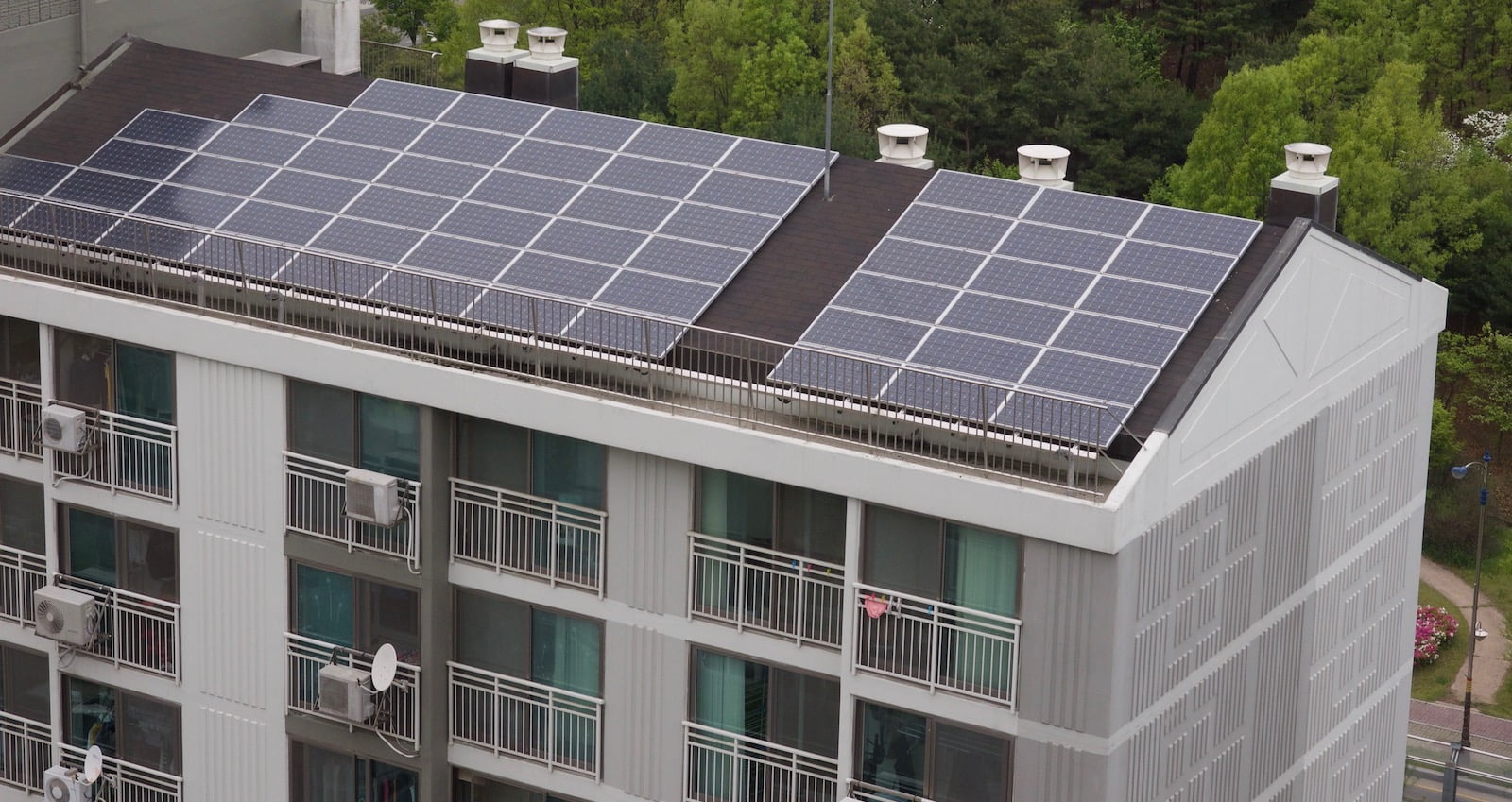Buildings contribute significantly to carbon emissions, and old residential buildings that have not been maintained or updated are among the biggest energy users and the largest carbon emitters. Older apartment buildings and multi family homes are where many low-income Americans live. We are in great need of simple, low-cost ways to get this existing housing stock on the path to zero while maintaining housing stability for low-income residents, improving affordability and enhancing quality of life.
There are several relatively simple upgrades that owners can make to get these older residential buildings on the path to zero.
Most Cost Effective Energy Upgrades
Two items have proven to be slam-dunk cost effective: LED lights and low-flow showerheads. They are so effective that building owners should simply replace older ones with modern, efficient ones. Any incandescent light should be replaced with an LED of the same or greater light output, measured in lumens. All showerheads should be replaced with models with a flow rating of 1.75 gallons per minute or less. In many locations, these two retrofits can be done free of charge through local utility programs or are supported with incentives.
Go High-Efficiency, All-Electric
When any energy-using device is in need of replacement, do so with a high-efficiency product. If old appliances burn natural gas, upgrade them to-high efficiency electric models. Replace failing appliances with all-electric ENERGY STAR appliances — including induction stovetops, high-efficiency front load washers, and heat pump clothes dryers. Replace an old gas water heater with a well insulated standard electric hot water tank or, much better, with a highly efficient heat pump water heater. Replace failing or highly energy inefficient heating and cooling systems with highly energy-efficient heat pump HVAC systems.
The Right Heat Pump HVAC System
There are many choices of heat pump HVAC systems including mini-splits for single family or smaller multifamily buildings, ducted central systems and package terminal units for smaller apartments. Heat pumps provide both heating and cooling and are highly energy efficient. Installing many of these systems is a simple retrofit. And they provide stable comfortable temperatures in all seasons. Be sure to size them correctly to achieve the best results in terms of efficiency and comfort.
The Benefits of All-Electric
There are many benefits to transforming older residential units to all electric. There will be no gas fumes from heating systems, gas hot water tanks, or gas stoves. This is a huge benefit for those with breathing problems or who are at risk of degenerative diseases like heart disease or diabetes. An all-electric home eliminates fossil fuels and their CO2 emissions from within the building. As utilities transition to renewable energy, all electric homes and buildings will have a carbon neutral energy supply.
If the local utility is not on the path to renewable energy, solar panels can be installed or community solar could be accessed to ensure the building is on the path to zero. In cases where solar is not feasible and where the local utility is stuck with fossil fuel powered electricity for decades to come, building owners should install the most efficient all-electric systems possible in their buildings. For instance, under circumstances where renewably sourced electricity is not available, builders should include highly efficient heat pump water heaters, heat pump dryers, and induction stoves as part of their energy-efficient upgrade plan.
Simple Efficient Air Sealing
When a tenant moves out, it is a great time to air seal an apartment to reduce energy costs and increase comfort. This can be done as part of the repainting process. Just before repainting, all air leaks can be sealed with caulking and foam sealant — using a blower door helps to identify the leaks.
Or a highly effective air sealing system such as Aerobarrier can be used to seal all air leaks prior to repainting. Making this part of the routine prior to new residents moving in will make it a simple and painless path to an airtight building.
Fresh Filtered Air
After units have been air sealed it is important to provide fresh air while retaining the heat in living units. This can be done by installing simple energy efficient ventilation, such as the Panasonic WhisperComfort, which can be installed in ceilings and vented to the outside. Another simple option for apartments is a through-the-wall ventilators. Units such as these not only provide fresh air, they filter it with Merv 6 or Merv 8 filters. When combined with an all-electric home, these ventilation systems improve air quality and health of residents without losing much heat.
Insulation Made Simple
Improving the insulation of older buildings is one of the biggest challenges when it comes to reducing energy waste. Larger buildings have an advantage when it comes to insulation since they have a smaller surface-area-to-volume ratio, which reduces heat loss. As mentioned earlier, the first step to reducing energy waste is to air seal the building. The second step in many situations is upgrading the building’s insulation. Loose fill insulation can be blown into standard attics in buildings with attic insulation. If the roof is flat and needs replacing, low global warming potential rigid foam insulation can be placed under the new roofing. If the siding needs replacement, the same kind of rigid insulation can be installed under the new siding. Using energy modeling will help show the most cost effective insulation measures tailored to the uniqueness of each building.
Improve Property Values – Improve Quality of Life
Owners of energy wasting, carbon emitting properties will soon suffer in the marketplace as more and more buildings get on the path to zero. Improving the energy efficiency of apartments offers a superior, solid, long-term investment for owners. The beauty is that these upgrades will improve the value of the property and reduce energy bills for the owner and also improve the life of residents – without having to disrupt their lives through evictions.

